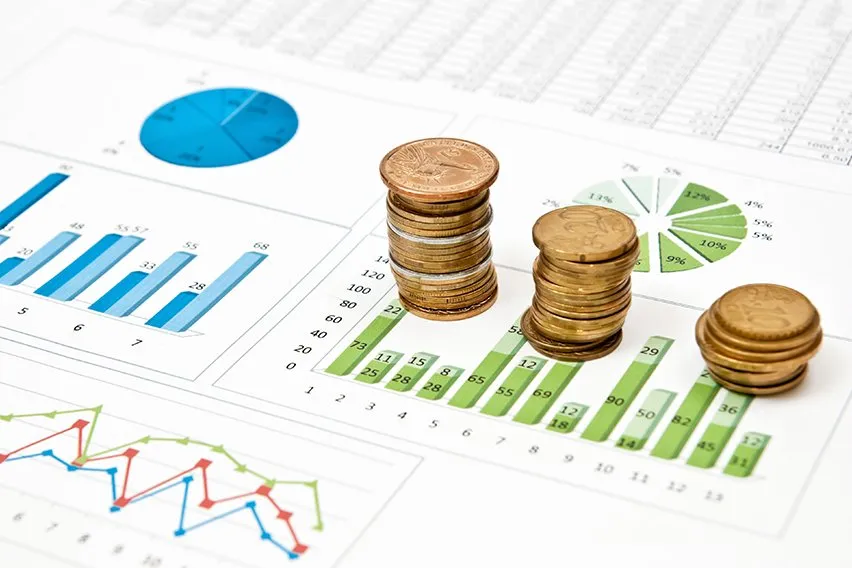In an ever-evolving economic landscape, businesses face a myriad of challenges and opportunities that can significantly impact their growth trajectory. Financial forecasting, often seen as the crystal ball of the corporate world, provides a strategic framework for navigating these complexities.
By leveraging historical data and market trends, companies can project future revenues, expenses, and cash flows with a degree of accuracy that empowers informed decision-making. But its not just about numbers; its about harnessing that data to craft a vision, to adapt strategies, and to fuel expansion in ways that resonate with both the market and the organizations core values.
In this article, well delve into the intricacies of financial forecasting—exploring how it serves not merely as a predictive tool, but as a vital catalyst for driving business growth in a competitive arena. Buckle up, as we unravel the layers of precision and insight that forecasting can bring to your strategic initiatives.
Introduction to Financial Forecasting

Financial forecasting is an essential, yet often overlooked, cornerstone of strategic planning in any business environment. By providing a glimpse into future revenue streams, expenses, and cash flow projections, it serves as a compass, guiding organizations through the fog of uncertainty that characterizes todays dynamic markets. Imagine standing at the helm of your company, navigating uncharted waters; with accurate financial forecasts, you can make informed, proactive decisions rather than reactive ones.
This practice transcends mere number-crunching; it intricately weaves together historical data, market trends, and economic indicators, crafting a narrative of what might come next. In a world where agility and foresight can make or break a business, mastering the art of financial forecasting could very well be the engine that drives sustainable growth and resilience.
So, let’s delve into the transformative power of this tool and explore how it can prop up your business strategy, ensuring you not only survive but thrive in the years ahead.
Types of Financial Forecasting

When considering the various types of financial forecasting, its essential to recognize that each method serves a distinct purpose and can be employed depending on specific business needs. Quantitative forecasting relies heavily on numerical data, utilizing historical sales figures and market trends to predict future performance—think of it as the analytical backbone of financial projections. Qualitative forecasting, on the other hand, taps into the insights, experiences, and intuition of industry experts, making it invaluable in scenarios where data may be sparse or ambiguous.
There’s also the concept of casual forecasting, which draws correlations between different variables, while time-series forecasting focuses solely on patterns over time, offering a glimpse into seasonal fluctuations or cyclical trends. Together, these diverse approaches unite to form a robust financial forecasting strategy that can guide businesses through uncertainty, helping them navigate both opportunities and challenges with confidence.
Key Components of Financial Forecasting

Financial forecasting is a multifaceted endeavor that hinges on several key components, each playing a pivotal role in shaping a comprehensive picture of a businesss future. At its core lies historical data analysis, where past performance illuminates trends and drives projections.
This is complemented by market research, which dives into industry trends, competitor behaviors, and economic indicators, creating a broader context for assumptions. Then theres the formulation of assumptions themselves, which hinge on variables like sales growth rates, expense patterns, and economic conditions, demanding both intuition and analytics.
Cash flow management is another critical aspect, ensuring that anticipated revenues align with operational and capital expenditures, ultimately laying the groundwork for financial health. Lastly, the integration of all these elements, often visualized through models and scenarios, enables businesses to navigate uncertainties with agility, pivoting strategies as necessary to seize opportunities and mitigate risks.
By weaving together these components thoughtfully, organizations can not only predict financial outcomes but also craft strategies that facilitate sustainable growth.
Conclusion
In conclusion, effective financial forecasting is a vital tool for businesses aiming to achieve sustainable growth and make informed strategic decisions. By leveraging data-driven insights and anticipating future trends, companies can optimize their resources, minimize risks, and seize opportunities in a competitive marketplace.
As Stefan Matthews aptly highlights, the key to successful financial forecasting lies in its integration into the organizations overall strategic framework, enabling leaders to align their goals with market demands. By embracing a proactive approach to financial forecasting, businesses can not only navigate uncertainties but also unlock their full potential for growth and innovation in today’s dynamic economy.


